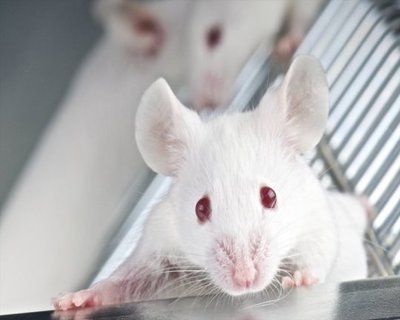- Home
- Editorial
- News
- Practice Guidelines
- Anesthesiology Guidelines
- Cancer Guidelines
- Cardiac Sciences Guidelines
- Critical Care Guidelines
- Dentistry Guidelines
- Dermatology Guidelines
- Diabetes and Endo Guidelines
- Diagnostics Guidelines
- ENT Guidelines
- Featured Practice Guidelines
- Gastroenterology Guidelines
- Geriatrics Guidelines
- Medicine Guidelines
- Nephrology Guidelines
- Neurosciences Guidelines
- Obs and Gynae Guidelines
- Ophthalmology Guidelines
- Orthopaedics Guidelines
- Paediatrics Guidelines
- Psychiatry Guidelines
- Pulmonology Guidelines
- Radiology Guidelines
- Surgery Guidelines
- Urology Guidelines
Lab-grown mini lungs successfully transplanted into mice

Researchers at the University of Michigan have transplanted lab-grown mini lungs into immunosuppressed mice where the structures were able to survive, grow and mature.
"In many ways, the transplanted mini lungs were indistinguishable from human adult tissue," says senior study author Jason Spence, Ph.D., associate professor in the Department of Internal Medicine and the Department of Cell and Developmental Biology at the U-M Medical School.
The findings were published in eLife and described by authors as a potential new tool to study lung disease.
Respiratory diseases account for nearly 1 in 5 deaths worldwide, and lung cancer survival rates remain poor despite numerous therapeutic advances during the past 30 years. The numbers highlight the need for new, physiologically relevant models for translational lung research.
Lab-grown lungs can help because they provide a human model to screen drugs, understand gene function, generate transplantable tissue and study complex human diseases, such as asthma.
Lead study author Briana Dye, a graduate student in the U-M Department of Cell and Developmental Biology, used numerous signaling pathways involved with cell growth and organ formation to coax stem cells the body's master cells to make the miniature lungs.
The researchers' previous study showed mini lungs grown in a dish consisted of structures that exemplified both the airways that move air in and out of the body, known as bronchi, and the small lung sacs called alveoli, which are critical to gas exchange during breathing.
But to overcome the immature and disorganized structure, the researchers attempted to transplant the miniature lungs into mice, an approach that has been widely adopted in the stem cell field. Several initial strategies to transplant the mini lungs into mice were unsuccessful.
Working with Lonnie Shea, Ph.D., professor of biomedical engineering at the University of Michigan, the team used a biodegradable scaffold, which had been developed for transplanting tissue into animals, to achieve successful transplantation of the mini lungs into mice.
The scaffold provided a stiff structure to help the airway reach maturity.
"In just eight weeks, the resulting transplanted tissue had impressive tube-shaped airway structures similar to the adult lung airways," says Dye.
Researchers characterized the transplanted mini lungs as well-developed tissue that possessed a highly organized epithelial layer lining the lungs.
One drawback was that the alveolar cell types did not grow in the transplants. Still, several specialized lung cell types were present, including mucus-producing cells, multiciliated cells and stem cells found in the adult lung.
You can read the full Article by clicking on the link :
Briana R Dye, Priya H Dedhia, Alyssa J Miller, Melinda S Nagy, Eric S White, Lonnie D Shea, Jason R Spence. A bioengineered niche promotes in vivo engraftment and maturation of pluripotent stem cell derived human lung organoids. eLife, 2016; 5 DOI: 10.7554/eLife.19732

Disclaimer: This site is primarily intended for healthcare professionals. Any content/information on this website does not replace the advice of medical and/or health professionals and should not be construed as medical/diagnostic advice/endorsement or prescription. Use of this site is subject to our terms of use, privacy policy, advertisement policy. © 2020 Minerva Medical Treatment Pvt Ltd